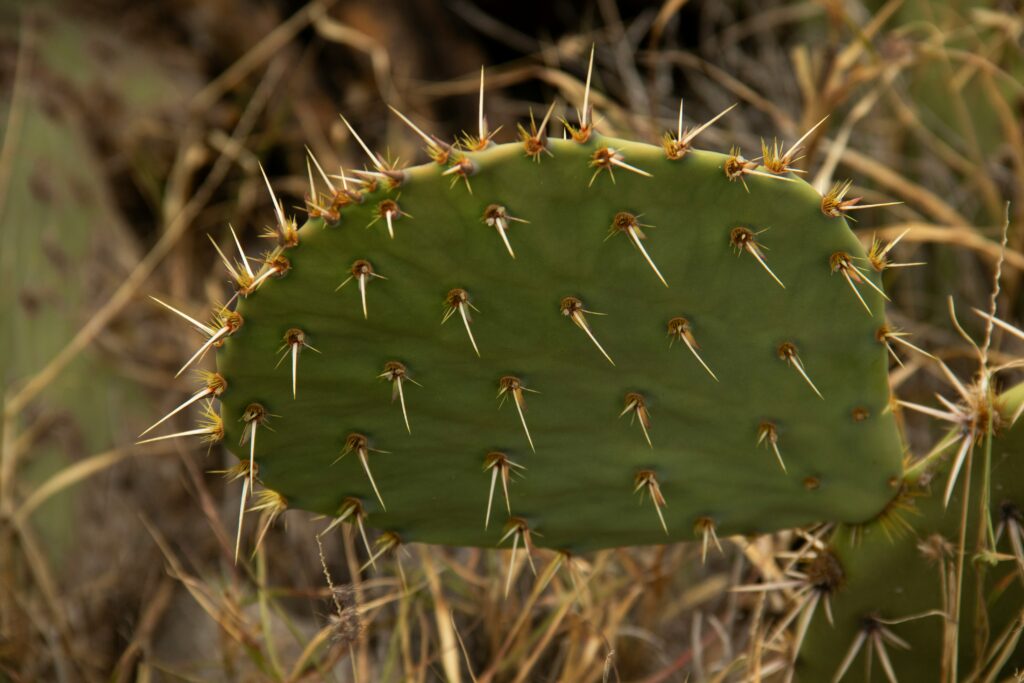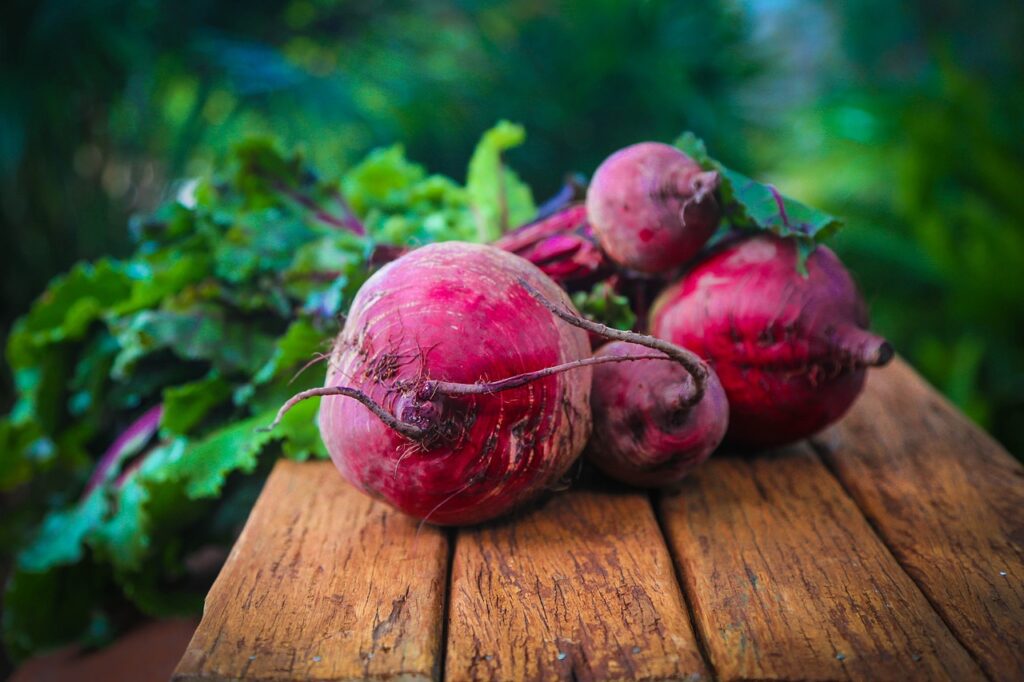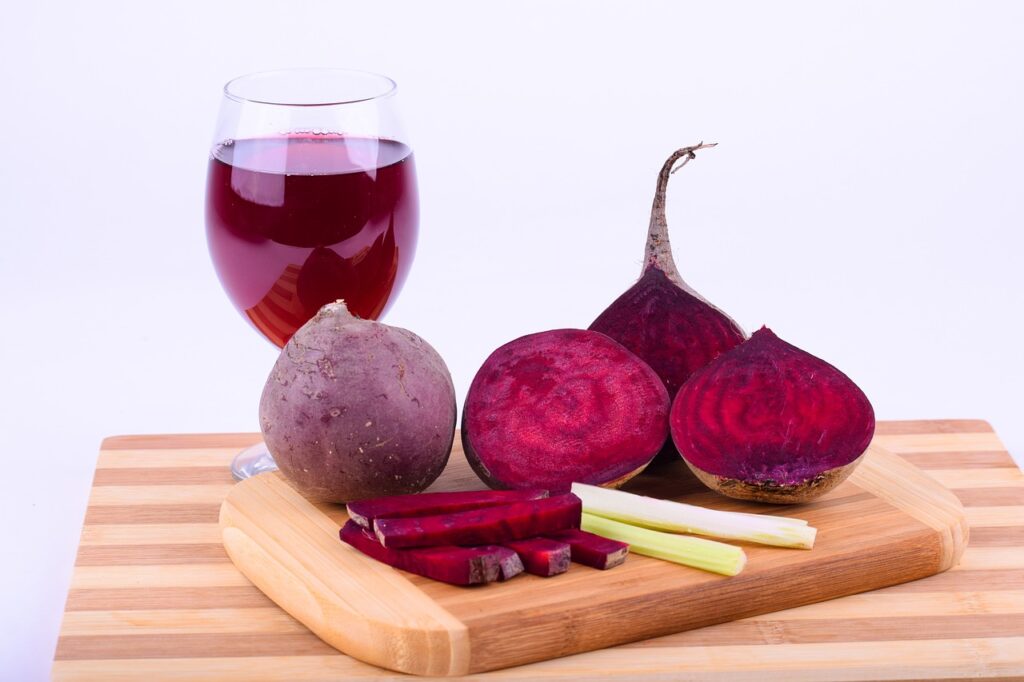1. Introduction and definition
Betanin belongs to the betalain family, a class of water-soluble pigments divided into two main groups: betacyanins (which include betanin) and betaxanthins. It is chemically defined as a glycoside, composed of a glucose linked to a betanidine. This pigment is classified as a natural colorant under the European code E162.
Origin and natural sources
Betanin is primarily extracted from beetroot (Beta vulgaris), where it makes up 75 to 95% of the pigments present. It is also found in other plants such as the prickly pear cactus (Opuntia ficus-indica). These plants produce betanin for natural defense purposes, including repelling herbivores and protecting their tissues from UV damage.
Industrial importance
Betanin is widely used in the food industry as a natural colorant. Its growing adoption is driven by a growing demand for products free from synthetic additives. In the cosmetics industry, it is prized for its intense color and antioxidant properties, while in biomedical research, it is attracting interest due to its potential to protect cells from oxidative stress.
2. Chemical and physical properties of betanin
Chemical structure
Betanin is a complex organic compound consisting of an aglycone, betanidine, bound to a glucose molecule. Its molecular formula is C24H26N2O13, with a molar mass of 550.47 g/mol. This structure gives betanin its water-soluble properties and relative stability in aqueous matrices.
Stability depending on environmental parameters
Betanin's stability varies depending on pH, temperature, and light exposure. At acidic pH (around 4-5), it displays a vibrant red color, while it turns purple at higher pHs. Prolonged exposure to light, oxygen, or high temperatures causes it to degrade. These characteristics make it a more suitable colorant for frozen or shelf-stable products.
Solubility and interaction with other compounds
Betanin is highly water-soluble, making it easy to incorporate into aqueous matrices such as juices or gels. However, it can interact with oxidizing or reducing agents, altering its effectiveness and color. These interactions must be carefully controlled in industrial formulations.
Optical characteristics
The color of betanin is strongly influenced by its spectral properties. It absorbs light in the visible region of the spectrum, with an absorption peak around 538 nm, giving it its characteristic red hue. This property is used in colorimetric analyses to quantify the concentration of betanin in various samples.

3. Natural sources of betanin
Red beetroot: the major source
Beetroot (Beta vulgaris) is the main source of betanin, accounting for up to 95% of the total pigments in the juice extracted from this plant. Betanin is located primarily in the vacuoles of beet cells, where it plays a protective role against oxidative stress.
Other plants rich in betalains
Besides beetroot, plants such as the prickly pear cactus (Opuntia ficus-indica) also produce betanin. In this cactus, the pigments are split between betanin and indicaxanthin, another betalain. These pigments vary in concentration and color depending on the species and environmental conditions.
Influence of growing conditions
Betanin concentration in plants depends on several factors, including growing conditions, soil composition, light, and temperature. Modern farming techniques, such as hydroponics, allow these variables to be controlled to optimize betanin production in crops.
Extraction and purification
Betanin extraction from plants is generally carried out using aqueous processes, followed by purification techniques such as ultrafiltration or chromatography. These methods produce high-purity betanin, suitable for the requirements of the food and cosmetic industries.
Are you looking for an analysis?

4. Industrial and commercial applications of betanin
Use as a food coloring
Betanin is widely used as a natural colorant in the food under the code E162, often referred to as "beetroot red." Its ability to provide a vibrant red color while being non-toxic makes it a popular choice for products such as:
- Dairy desserts and ice creams.
- Confectionery and bakery products.
- Fruit juices and energy drinks.
However, its sensitivity to heat and light limits its use to frozen products or those with a short shelf life.
Role in the cosmetics industry
cosmetic field , betanin is used as a pigment in lipsticks, blushes and skin care products. Its naturalness and antioxidant properties add value to formulations by meeting the growing demand for more environmentally friendly and healthy products.
Pharmaceutical applications
Betanin is also being evaluated for medical and pharmaceutical applications. Its antioxidant and anti-inflammatory properties suggest beneficial potential for preventing or mitigating oxidative stress in chronic disease settings. It could be incorporated into dietary supplements or therapeutic formulations.
Integration into innovative products
New avenues of use for betanin are emerging thanks to its compatibility with bioactive materials. For example:
- In active food packaging, to extend the shelf life of food.
- In textiles, to provide antimicrobial and antioxidant properties.
Limits and challenges
Despite its many benefits, betanin presents challenges related to its stability. Efforts to improve its resistance to light, heat, and alkaline pH are the subject of active research, aimed at expanding its range of uses.
This section illustrates the importance of betanin in various sectors and its growing role in the development of innovative and sustainable products.

5. Methods of analysis of betanin
Importance of Betanin Analysis
Accurate analysis of betanin is essential to ensure its quality and efficacy, whether in food, cosmetics, or pharmaceutical formulations. Characterizing and quantifying this compound allows for:
- Comply with regulatory safety standards.
- Optimize industrial formulations.
- To study its antioxidant properties and biological effects.
Chromatographic techniques
High-performance liquid chromatography (HPLC) is one of the most commonly used methods for analyzing betanin. It offers efficient separation and accurate quantification. When combined with UV or MS (mass spectrometry) detectors, this technique allows:
- To detect betanin even at very low concentrations.
- To identify and differentiate its isomers, such as betanin and isobetanin.
UV-Vis spectroscopy
UV-Vis spectroscopy is often used to assess the concentration of betanin in simple solutions. It is based on the characteristic absorption of betanin in the visible region, which varies with pH:
- Bright red at acidic pH.
- Violet at neutral pH.
- Yellow-brown at alkaline pH.
HS-GC-MS screening for the characterization of associated volatile compounds
For in-depth studies, HS-GC-MS (Headspace-Gas Chromatography-Mass Spectrometry) screening is used to analyze volatile compounds related to betanin degradation:
- Samples must be collected in a sealed, inert container.
- The limit of quantification (LOQ) is between 0.1 and 10 mg/L, depending on the compounds.
- The laboratory's internal method ensures high reproducibility and reliability.
Limitations of analytical methods
Although these techniques are powerful, some limitations remain:
- Rapid degradation of betanin can affect the accuracy of measurements.
- The complexity of food or cosmetic matrices may interfere with results.




